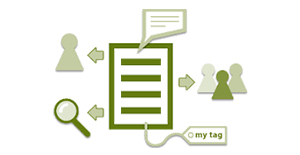Issue Details
A STUDY OF CLOUD COMPUTING-BASED E-LEARNING SYSTEM ARCHITECTURE IN EDUCATION 4.0 AND ITS FUTURE
Dr. Sandeep
Page No. : 1-10
ABSTRACT
Cloud computing is a computing model of providing IT resources such as application, infrastructure and platform as a service using the Internet. Cloud Computing provides the infrastructure for calculations and processing of all types of data sources and is adapted to work with large amounts of data. This internet present technology has brought flexibility, capacity and processing power. This technology recognized the service-oriented idea and created a new system in the world of computing with its influence and advantages. The possibilities of cloud computing have been able to move the IT industry one step forward. Currently, large and important enterprises have migrated to cloud computing and moved their processing and storage to it. Proximity to refined code computers has made it possible to bring back a number of exasperated issues into the call at the present time and in a lower regard. This article shows the characteristics of this e-learning, that is, examines the distinction of disseminated negative pages and displays the structure of the distributed phase method after the process of the e-learning alternative. The creators sought to introduce the disseminated method to e-learning, to collect the e-learning cloud, the build degree of associated eager research and research for it from other edges: structure, improvement rationale, and external interface with the model. E-learning architecture based on Cloud Computing is the implementation of an e-learning system using the advantages of Cloud Computing. In addition, the e-learning system will undergo a change with the onset of the Education 4.0 era, which is an adaptation of the development of Industry 4.0. These articles that evaluate the architecture of cloud-based e-learning systems, as well as articles on Education 4.0.
FULL TEXT









